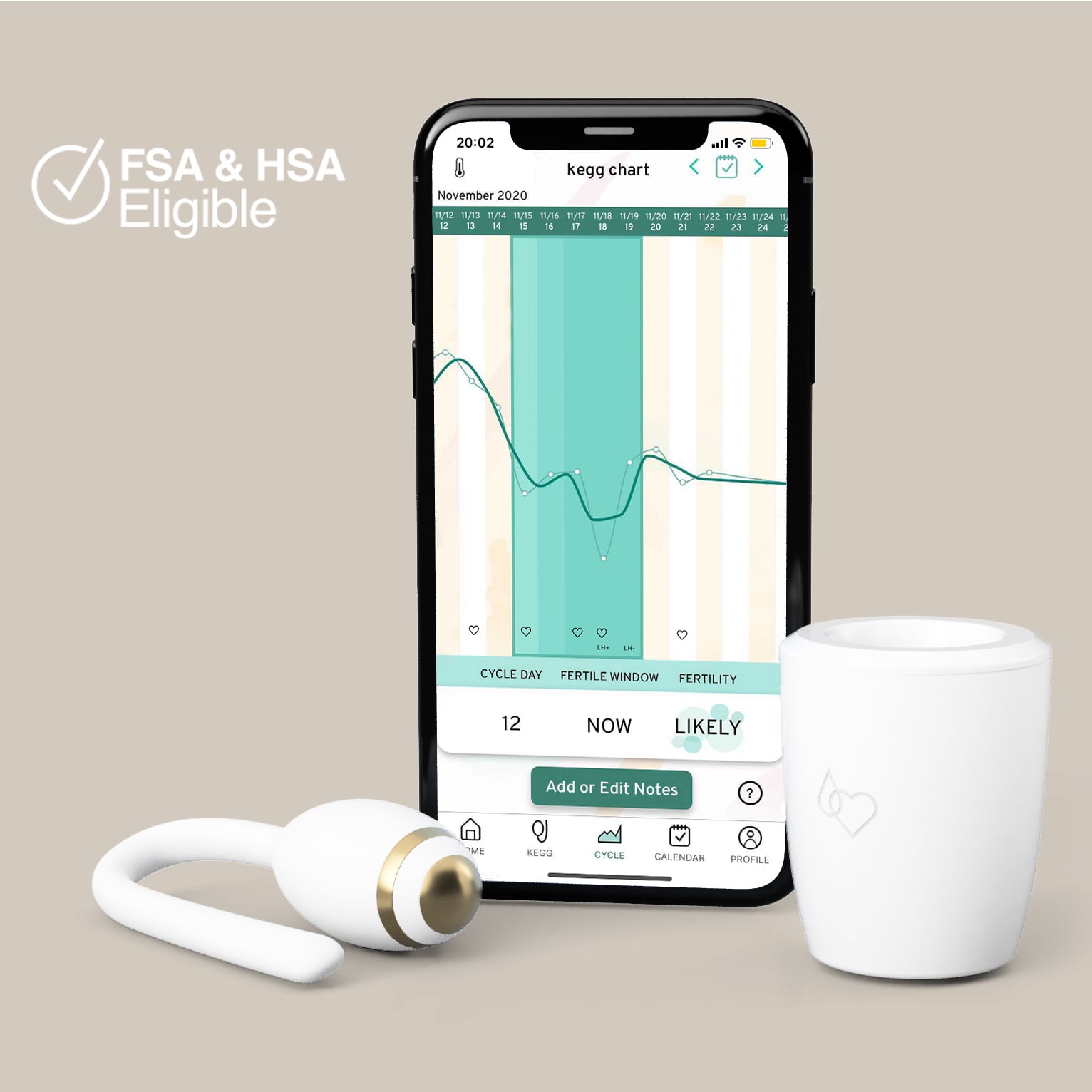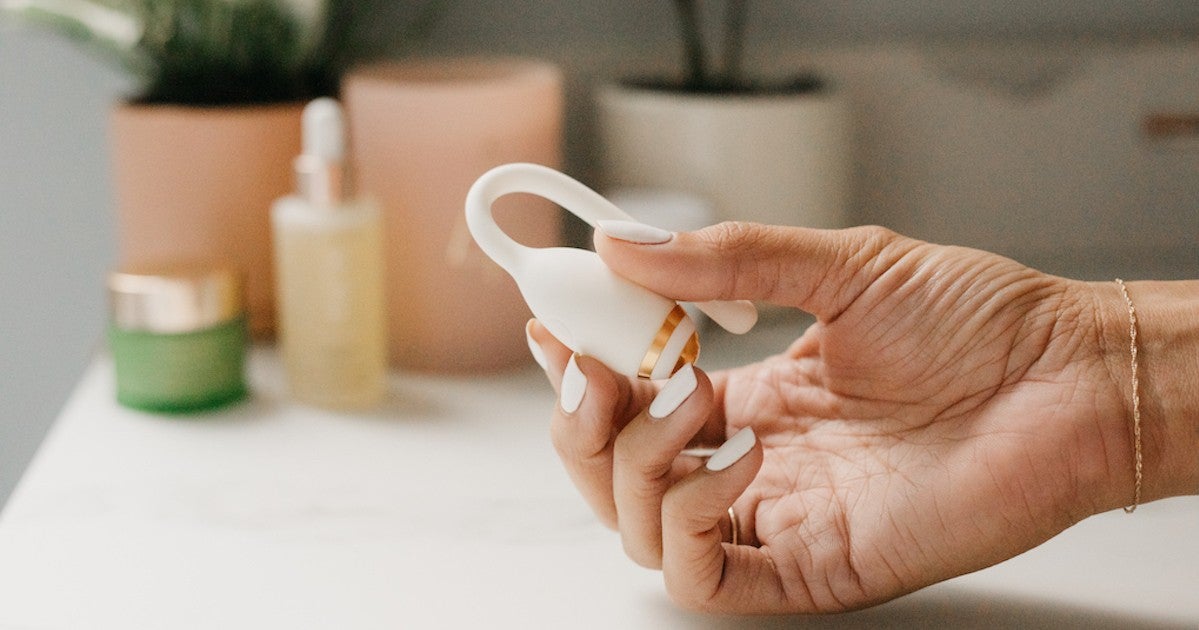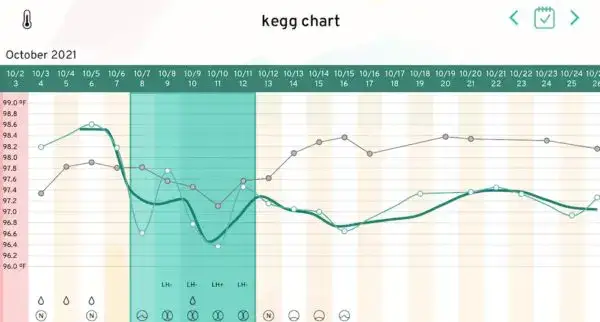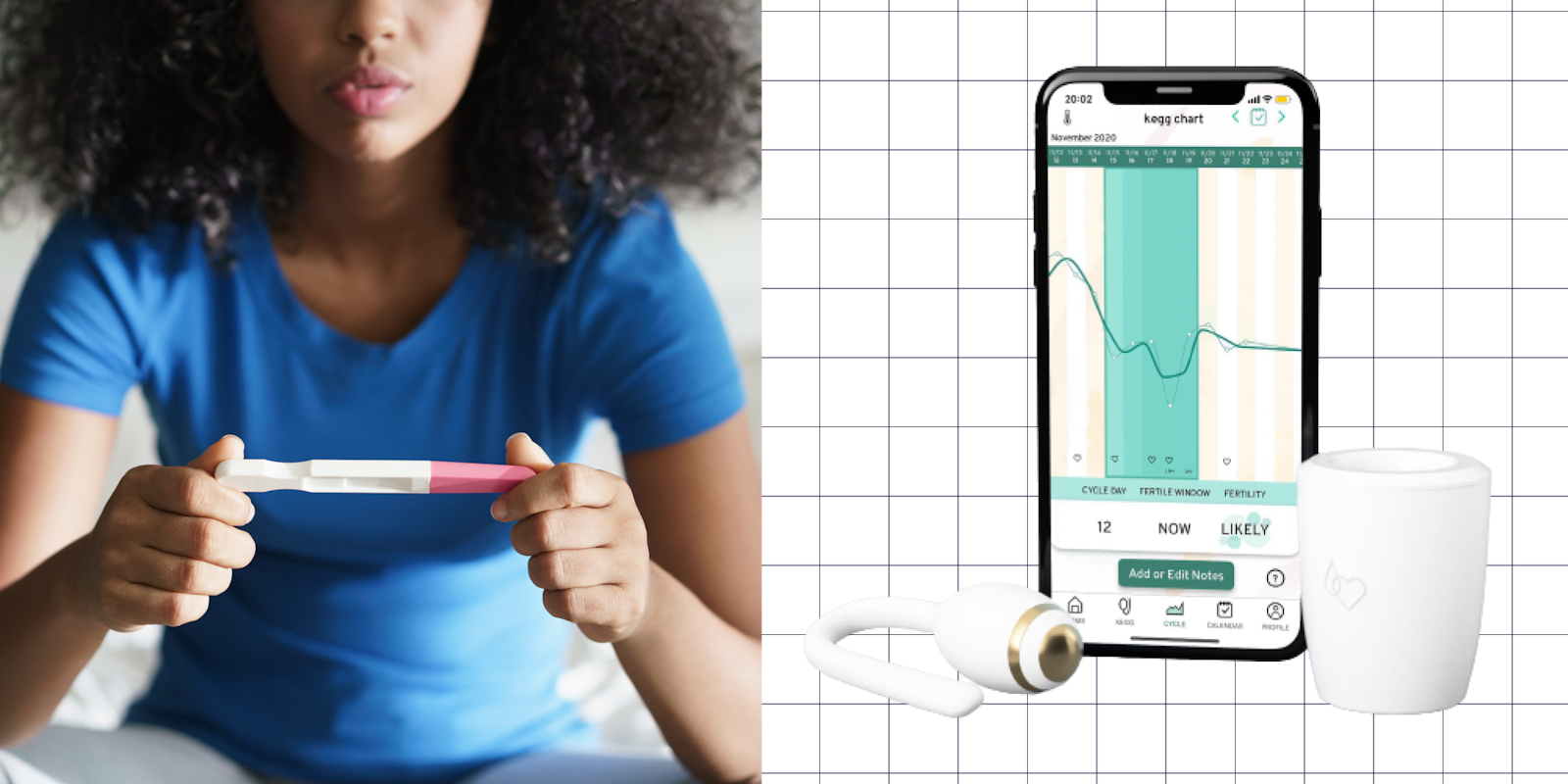The Daily Dot may receive a payment in connection with purchases of products or services featured in this article. Read our Ethics Policy to learn more.
Fertility tracking is one of the most important factors when trying for a baby. In the average 28-day cycle, there are about six ovulation days each month when a woman can get pregnant. The Kegg fertility tracker pinpoints your ovulation periods each month so you can maximize your chances of conception.
What is an ovulation cycle and how does it work?
Simply put, your ovulation cycle is a window of days where you’re most likely to get pregnant. Understanding your ovulation cycle means understanding your menstrual cycle as well. While it may seem like your ovulation cycle is its own stand-alone process, that’s not the case.
The first phase of your monthly cycle starts with your first day of bleeding. During this time, your body releases hormones that cause the eggs stored inside your ovaries to begin to grow. These hormones also help thicken the lining of your uterus to get ready for a fertilized egg.
During ovulation, the luteinizing hormone (LH) surges, causing the egg to detach when it is at its most ripe. As the egg travels along your fallopian tubes towards your uterus, a sperm will hopefully attach itself to the egg and fertilize it. However, if the egg is not fertilized within 24 hours of leaving the ovaries, it will dissolve.
While an egg only has a 24-hour lifespan, sperm can live for three to five days. Because of this, it’s best to have sex one to two days before you begin ovulating.
What is the importance of fertility tracking?
Now that we know an egg can only survive for 24 hours unfertilized, the importance of fertility tracking should be hovering in your mind. Considering there is only one 24-hour chance of fertilization each month, understanding your window of fertility is a key component to becoming pregnant.
Typically, a fertile window is about six days a month. The window includes the five days before ovulation, plus the first day of ovulation.
When sex occurs within the three days leading up to, and including, ovulation, the chances of conceiving increase dramatically. If sex occurs four or more days before ovulation, the chance of pregnancy is slim to none.

Are there ways to track my ovulation cycle other than Kegg?
Calendar Tracking
This method may be the most basic, but it can also be the most time-consuming. Calendar tracking is exactly what it sounds like; predicting your ovulation cycle by tracking your menstrual cycle on a calendar!
To accurately calendar track, you’ll need to have at least six months of data under your belt. If you’ve been using a menstrual calendar or app to track your cycles, you’re in luck! If not, six months may be too long of a wait for you.
Once you have all six months of data, here’s how to calendar track. First, mark the first day of your period as day one, and mark the first day of your next period. Count the total number of days in between each cycle. If all of your cycles are shorter than 27 days, this method will not work for you.
To predict your first fertile day, subtract 18 from the total number of days in your shortest cycle and count to that number from day one. For example, if you had 28 days in your shortest cycle, you would subtract 18 from 28 to get 10. From there, you would count 10 days from the first day of your period. If your first day was on the fourth of the month, the first day of your fertile cycle would be on the 13th.
The biggest drawback with calendar tracking is its lack of pinpointed dates for fertility and zero margins for error. While we know that a true fertile window happens in those five days before and the first day of ovulation, your average calendar-tracked window can be anywhere from 10 to 14 days long leaving you with too many possible days to be truly accurate.
Temperature Tracking
The temperature method helps you predict your ovulation cycle by monitoring the changes in your body temperature during your menstrual cycle. During your menstrual cycle, it’s completely normal for your body temperature to fluctuate slightly. In the first part of your cycle, your temperature will most likely be within 96-98 degrees Fahrenheit. After ovulation, your temperature can range from 97-99 degrees Fahrenheit.
In order to properly execute this method of tracking, you must take your temperature under the same conditions every day and keep track of any changes. It is recommended to take your temperature as soon as you wake up, at the same time each day for the most accurate results.
It’s important to note that the temperature tracking method does have some flaws. Depending on your day-to-day lifestyle, many factors can affect your daily temperature readings and skew your overall ovulation predictions. Smoking, jet lag, sickness, hangovers, lack of sleep, and stress are all contributing factors that can affect your temperature.
Cervical Mucus Tracking
If you’re a bit squeamish with bodily fluids, this may not be the best tracking method for you. The method predicts your ovulation cycle by tracking the changes in your cervical mucus during your menstrual cycle.
Around your ovulation cycle and during your menstrual cycle, your cervical mucus will change in color, texture, and amount. These changes will help you determine when you’ll ovulate and when will be the best time to get pregnant. It’s recommended to start this method with the help of a medical practitioner to ensure you get it right.
You can check your cervical mucus in a number of ways. Wiping the opening of your vagina before you pee with toilet paper, examining your underwear, or simply inserting your fingers into your vagina are all valid ways you can check the color and texture of your cervical mucus. Be sure to record everything you feel and see. By rubbing the mucus between your index finger and thumb, you’ll be able to note the texture as dry, wet, sticky, or slippery. As well, according to Planned Parenthood, one should avoid vaginal sex for one whole cycle at the start of charting as sex can cause your body to produce different textures and amounts of mucus.

What is Kegg?
Now that we’ve covered all the basics of alternative testing, I’d like to introduce you to your new best ovulation friend—the Kegg. This device essentially takes the cervical mucus method and adds pinpointed technology to the mix. Instead of testing your mucus yourself with little to no knowledge and estimated guesses, Kegg uses its intelligent algorithm made up of decades worth of scientific research to deliver an accurate result.
According to the Kegg website, here’s how their technology delivers accurate readings. “Within the fertility cycle, increasing estrogen causes the electrolyte levels in the cervical fluid to change. Kegg uses proven and precise measurement technology. It detects the fertile window and hormonal switch from estrogen to progesterone dominance that comes with ovulation.”
How the engineers over at Kegg achieved this is beyond interesting and involves new technology. “This is done with impedance technology. During the brief test, Kegg uses very low-level electrical pulses to sense how your cervical fluid affects those pulses.” Thanks to this process, the Kegg device can predict a more accurate window of fertility compared to probability-based options like period tracking and calendar methods.
My experience with Kegg
While I am not currently in the process of trying to conceive, using the Kegg proved to be a fun and insightful experience. Getting an in-depth read on my fertility and my ovulation cycle helped me answer long-held questions about my own menstruation cycle in the process.
When you receive your Kegg, it comes in a box complete with a charging station and four easy directions on how to get started. The directions recommend charging your device before using it to achieve the most accurate first reading. Once you’ve unboxed your device and put it to charge, you can begin downloading the Kegg app. All of your readings will be stored here and configured into easy-to-read data points for you to digest.
I tried the Kegg for two weeks, inserting it daily for the suggested amount of time and tracking my data through the app. While I have yet to complete a full cycle of testing with the device, I can already see the map of my fertility beginning to pan out.

Is it worth it?
All in all, I loved how easy it was to use the Kegg on a day-to-day basis. It was easy to insert, and the kegel exercises really made a difference in my overall pelvic floor strength.
I would 100% recommend anyone trying to become pregnant to invest in the Kegg and try it out for themselves! The app is easy to use and provides amazing results daily and monthly that can really tip the scales in your favor during your pregnancy journey. Try Kegg today and get $10 off!


